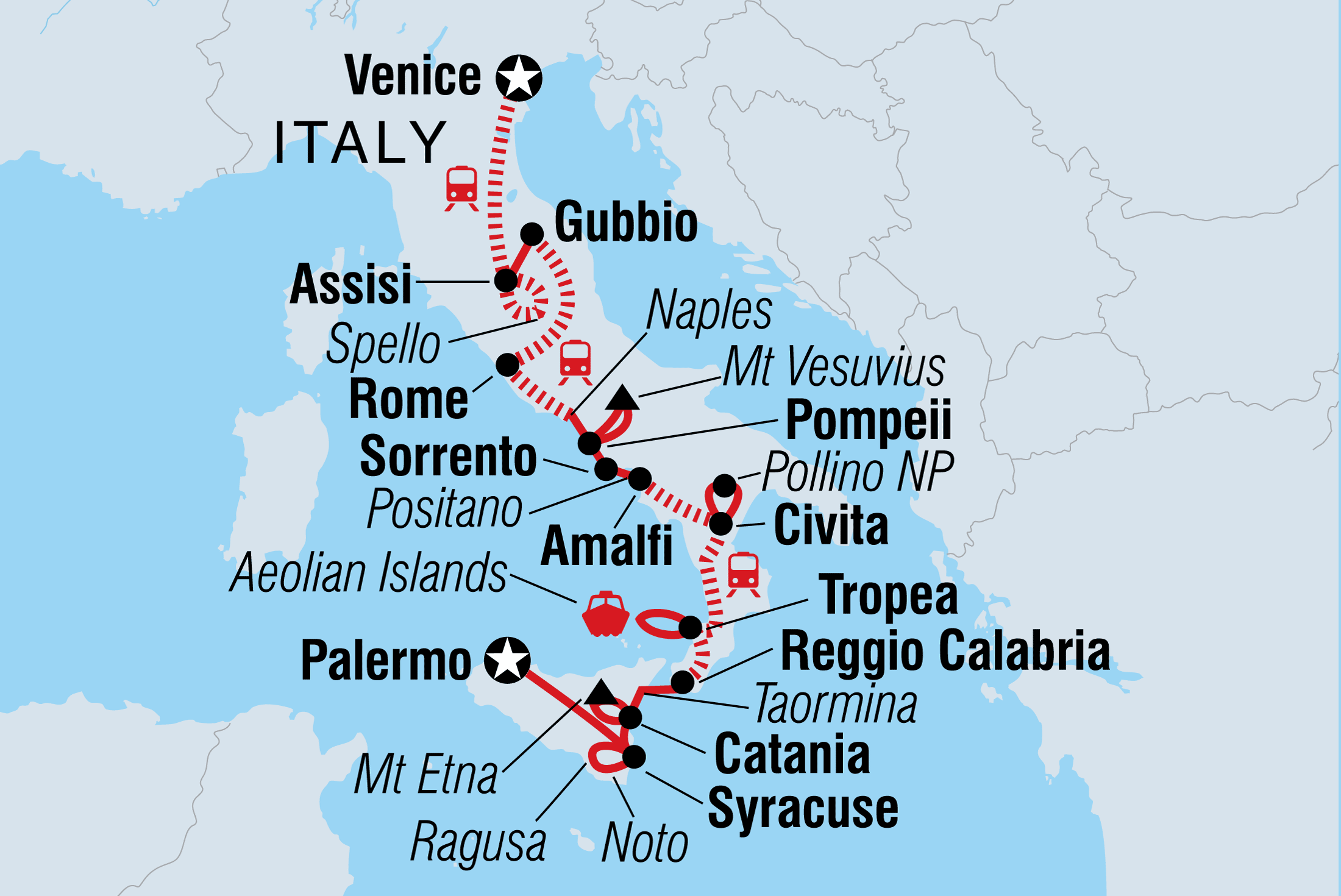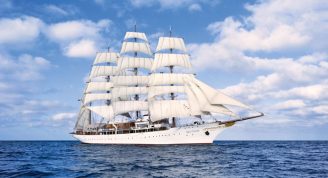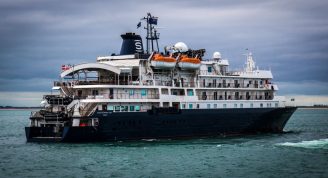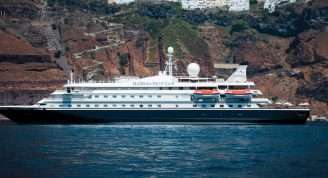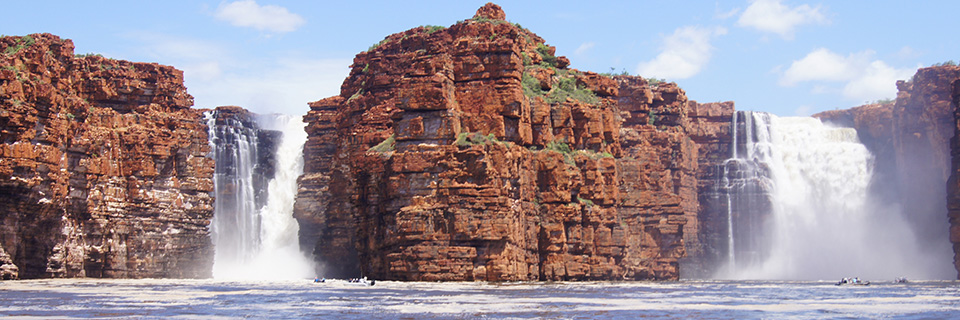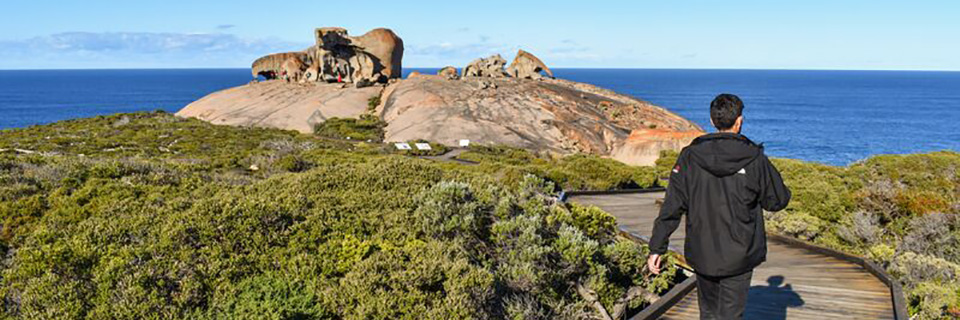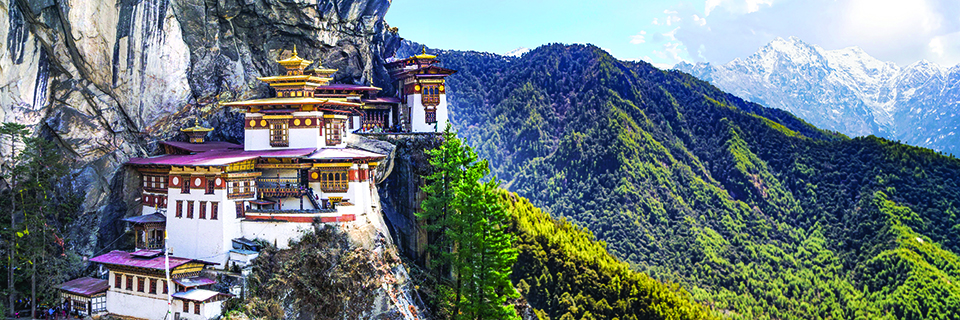Description
Visit the most sacred places in Italy as you travel from Venice to Sicily, via the Umbrian hilltop towns of Gubbio and Assisi. Continue to Italy’s ‘Eternal City’ of Rome and learn about the catastrophic fate of Pompeii. Soak up the sunshine in beautiful Amalfi. See the smoke gently floating from the volcanoes of the Aeolian Islands – Calabria is a hidden gem for those who stray off Italy’s beaten path. Discover this less-visited part of the country before delving into the spectacular sights of bustling Sicily, volcanic valleys of Mt. Etna, timeworn streets of Syracuse, and rich anti-mafia history of Palermo. This trip offers the chance to delve into history, culture and cuisine and to live a little of la dolce vita.
- Romantic Venice is like no other city in the world, a watery wonderland literally sinking under the weight of its iconic sights
- Explore the masterpiece medieval town of Gubbio – centuries of history around every corner and the requisite cobblestone streets, gothic palaces and churches, all with stunning views straight across the valley
- Visit the birthplace of St Francis, Italy's second holiest city, to explore the imposing basilica built in his name
- If Italian cuisine is known for its simplicity and big flavours, no place does this better than rural Spello. Let Umbrian delicacies such as lamb meat balls with rosemary and porcini risotto whet your appetite
- No Italian adventure would be complete without a visit to Rome. Enjoy plenty of free time to discover the ancient Colosseum, stroll through Vatican City and gaze up towards the gods inside St Peter's Basilica
- Explore the vast, frozen in time ruins of ancient Pompeii, which emerged from the ashes after thousands of years, and take a peak inside the steaming crater of Mt Vesuvius, the volcano that destroyed it
- Hike among the olive groves on the Path of the Gods along the spectacular Amalfi Coast
- Get up close and personal with the active volcanoes scattered across the Aeolian Islands and perhaps take a dip in one of the suplhur springs
- Surrounded by dramatic valleys and craters set in a lunar-like landscape, towering Mt. Etna is one of the greatest natural beauties of the Mediterranean, and Europe’s largest active volcano









